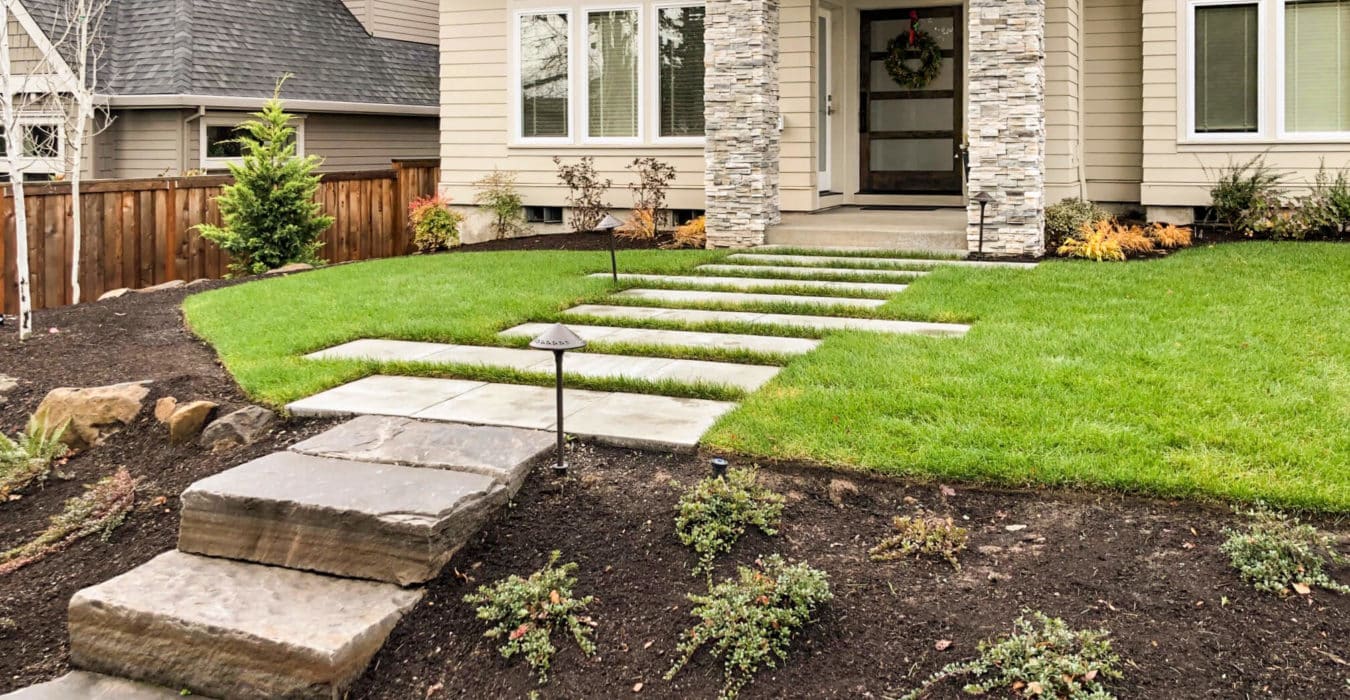
Stepping stone walkways add a natural, charming look to gardens, yards, and patios. But over time, they can become slippery, stained, and covered with algae, moss, mud, and debris—especially in shaded or moist areas. 🌧️🌱
Cleaning them with a hose or broom often isn’t enough. That’s where pressure washing steps in (pun intended). When done right, it can restore the original beauty and safety of your walkway without dislodging or damaging the stones. Let’s walk through how to do it properly! 👣🧼
🪨 What Makes Stepping Stone Walkways Tricky?
Unlike solid concrete paths, stepping stones are usually:
- Set in dirt, mulch, gravel, or grass
- Loosely placed and may shift under pressure
- Made from natural stone, pavers, or concrete
This means you need a gentler approach to avoid:
- Blasting stones out of position
- Damaging joints or borders
- Eroding the base underneath the stones
✅ Best Equipment for the Job
- Pressure washer (1,500–2,500 PSI)
- 25° or 40° nozzle
- Garden hose with sprayer (for rinsing)
- Mild detergent (optional)
- Nylon brush for scrubbing
- Leaf blower or broom (pre-cleaning debris)
💡 Skip the turbo nozzle—it’s too aggressive for this delicate job.
Browse Amazon Here For Top Rated Power Washers And Accessories
🧽 Step-by-Step: How to Pressure Wash Stepping Stone Walkways
1. Clear the Area 🧹
Remove leaves, dirt, sticks, and loose debris with a broom or leaf blower. Move any decor or furniture out of the way.
2. Inspect for Loose Stones 🪨
Check for stones that wobble or have shifted. Reset or tamp them down before washing to avoid movement during cleaning.
3. Apply a Cleaner (Optional) 🧼
If you have algae, mildew, or organic staining, spray a biodegradable detergent over the walkway. Let it soak for 5–10 minutes.
4. Power Wash with a Gentle Spray 💦
Use a 25° or 40° nozzle and keep the tip 12–18 inches away. Spray at a slight angle, not straight down, to prevent dislodging the stones.
Move in slow, overlapping passes. For stones set in grass or mulch, spray away from the seams to avoid erosion.
5. Spot Scrub if Needed 🧽
For stubborn patches, use a nylon brush and a bit of detergent. Avoid using metal brushes—they can scratch natural stone.
6. Rinse Thoroughly
Use a lower-pressure rinse (garden hose works well) to flush away detergent and loosened debris.
7. Let Dry and Recheck Alignment 🌤️
Allow the walkway to dry for a few hours. Then walk the path and test for any loose stones. Adjust as needed by adding soil or base material underneath.
🧪 Best Cleaners for Stone Walkways
Choose cleaners that are:
- Safe for natural stone, pavers, or concrete
- Biodegradable and non-corrosive
- Specifically formulated for moss, mildew, or algae
Good options:
- Simple Green Outdoor Cleaner
- Wet & Forget
- DIY mix: 1 part white vinegar + 3 parts water + a few drops of dish soap
🚫 Avoid bleach—it can damage plant life and discolor stone.
Browse Amazon Here For Biodegradable Pressure Washing Detergents
⚠️ Common Mistakes to Avoid
❌ Using high PSI (>3,000) on fragile stones
❌ Power washing loose or sunken stepping stones
❌ Spraying directly into joints or seams
❌ Ignoring drainage—water should flow away from the stones
❌ Washing during muddy conditions—it just spreads grime around
🧼 Maintenance Tips for Cleaner Walkways
- Blow or sweep leaves weekly
- Treat for moss/algae monthly in humid climates
- Add polymeric sand or gravel around stones to reduce weed growth
- Power wash twice a year for best results
- Keep nearby trees trimmed to reduce shade and debris buildup
👷 When to Call a Pro
Hire a professional if:
- The walkway is part of a large landscape design
- Stones are heavily stained or moldy
- There’s uneven terrain or erosion around the path
- You want to reseal or re-grout between stones after cleaning
Pros use soft wash systems and tailored cleaners that prevent damage and deliver consistent results.
🪴 Final Thoughts
Stepping stone walkways should be safe, clean, and welcoming—not slippery and stained. With the right pressure, cleaner, and prep, you can use your pressure washer to revive these paths without harming your landscape. So go ahead—give those stepping stones a fresh start! 🧽🪨💦
Browse Amazon Here For Popular Pressure Washers And Accessories



